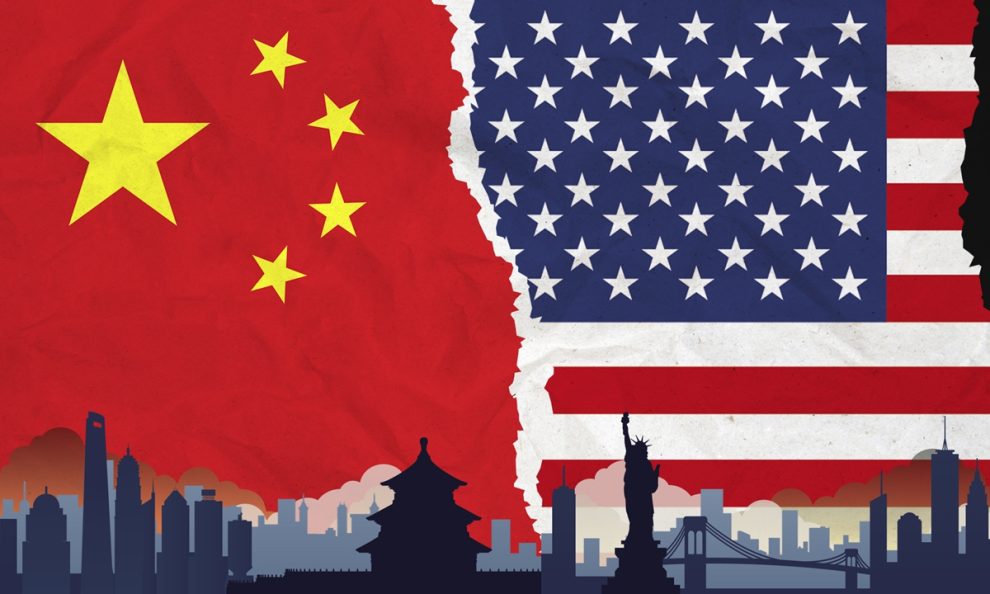In the high-stakes global race to lead in artificial intelligence (AI), the United States and China have emerged as the two frontrunners. However, their approaches to developing AI expertise and industries differ starkly.
The US has embraced a decentralized, market-driven approach, with billions in private VC funding flowing into AI startups aiming to commercialize innovative applications. China, on the other hand, has adopted a top-down, government-led strategy, with massive state subsidies powering leading Chinese tech giants and state-owned enterprises to pursue technological supremacy.
Both approaches have upsides and downsides in the rapidly evolving, ultra-competitive arena of AI. As the two AI superpowers pull ahead of the pack, who has the edge – America’s flexible, dynamic capitalism or China’s focused, central planning?
America’s Free-Market Approach Fuels Bottom-Up Innovation
The American approach to developing AI has relied heavily on private enterprise, with VC firms and tech startups pursuing commercial applications. Key aspects include:
- Massive private funding and commercialization: American VC firms poured over $70 billion into AI and machine learning startups since 2016. The priority is developing AI innovations with real-world utility that attract paying customers and generate profits.
- Hotbeds of bottom-up innovation: The leading US tech hubs – Silicon Valley, Boston, Seattle, Austin – act as thriving ecosystems for AI entrepreneurship and creativity.
- University brain trusts and talent pipelines: Elite US universities like Stanford and MIT host world-class AI labs that yield cutting-edge research and well-educated graduates who feed startups.
- Priority on real-world implementation: The US AI ecosystem focuses heavily on testing applications in areas like autonomous vehicles, precision medicine, automated business processes, and natural language processing.
Strengths of the US Approach
This decentralized, market-driven approach has yielded formidable strengths:
- Dynamic innovation and adaptation: The chaotic creativity of US tech hubs, fed by private capital, allows rapid progress. Ideas and talent combine in novel ways, with promising approaches attracting more funding.
- Commercial focus and global leadership: The focus on selling to real customers has made US companies leaders in fields like cloud services, e-commerce platforms, streaming media, and social networks.
- Attracts global talent: The thriving tech industry centered around merit and creativity appeals to gifted researchers, engineers, and entrepreneurs from around the world.
Weaknesses of the US Approach
There are also notable weakness in the US AI landscape:
- Scattered efforts and duplicated work: The lack of central coordination leads to fragmented, unconnected initiatives working on duplicate problems.
- Short-term thinking: Publicly traded tech firms often prioritize near-term profits over important long-term projects.
- Geographic inequality: Prosperity and innovations are concentrated in coastal urban centers, depleting America’s interior of talent and capital.
China’s Central Planning Mobilizes State-Led AI Development
In contrast to the US grassroots model, China has adopted a government-led top-down approach to AI ascendancy, with key policies like:
- National AI strategy and generational support: China named AI a core national priority in 2017, with policies projecting decades into the future rather than election cycles.
- State subsidies and firm directives: China uses subsidies, loans, tax incentives and procurement rules to invest billions into select Chinese companies to rapidly advance China’s AI capabilities.
- Tech giants and state champions: Vast government support empowers leading Chinese tech firms like Alibaba, Baidu, and Tencent along with state-owned firms to pursue major AI goals.
- High-tech industrial policy: China aims to dominate global high-tech industries from 5G to biomedicine to advanced semiconductors by leveraging AI and other strategic technologies.
Benefits of China’s Approach
China’s state-driven model offers important advantages, including:
- Clear strategic direction: China’s centralized approach allows it to map out priorities, such as smart cities and intelligent manufacturing, and steadily work towards them.
- Resource concentration: The government can focus funding, data, and talent on a small number of massive firms with the heft to rapidly advance capabilities.
- Public goods focus: State-led effort applies AI to public priorities like transportation, public health, and urban optimization – areas US firms neglect.
Perils of China’s Approach
However, concentrating so much power in government hands poses hazards as well:
- Impedes basic research: Academic freedom and blue sky exploration suffer, handicapping radical breakthroughs.
- Curtails innovation ecosystems: Top-down control and censorship thin the idea diversity and creativity that breeds novelty.
- Enables oppression: Expansive digital surveillance and predictive algorithm systems empower authoritarian social control and punish dissent.
Where the AI Race Stands Today
While China has progressed rapidly, the US maintains AI leadership for now across several fronts:
- Research output: The US accounts for over half of all AI academic papers and breakthrough innovations.
- Leading firms by revenue: American tech giants like Alphabet, Microsoft, Amazon, Meta, and Apple dominate the list of highest grossing AI corporations.
- Hotbeds of innovation: Silicon Valley and other US tech hubs outpace Chinese rivals as creative ecosystems that regularly churn out ideas, talent, and startups.
- Global talent magnets: The flexibility and freedoms of America’s research institutions still attract gifted researchers from China and around the world.
However, China’s state-backed technology apparatus continues advancing quickly as well, demonstrating its strengths.
The AI Race Remains Up for Grabs
Given the complex dynamics, neither the US or China’s approach is assured of ultimate victory in the generational contest to lead development of the world’s most important general purpose technology. With AI poised to transform every sector and industry, creative application and ethical implementation will prove equally vital for societies to navigate the coming waves of change.













Add Comment